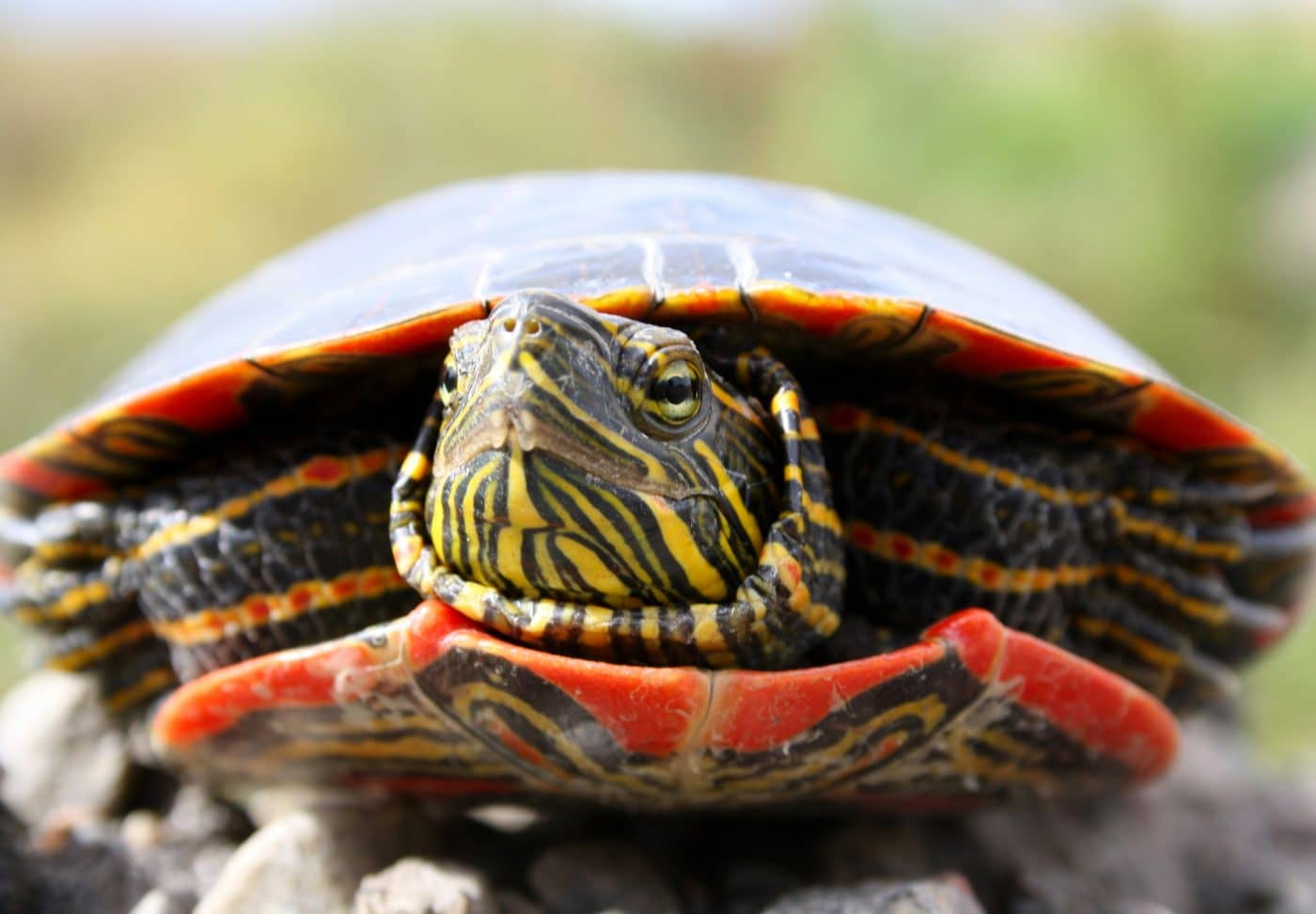 Shutterstock
Shutterstock
Reptiles are home to some of the most mesmerizing creatures on the planet, adorned with stunning colors and patterns. From vivid blues and oranges to radiant greens and yellows, these reptiles use their vibrant hues for various purposes—camouflage, attracting mates, or warding off predators. Their striking appearances not only captivate the eye but also highlight the incredible diversity of life on Earth. Join us as we explore some of the most vibrantly colorful reptiles that are sure to leave you in awe of nature’s beauty.
Rainbow Boa
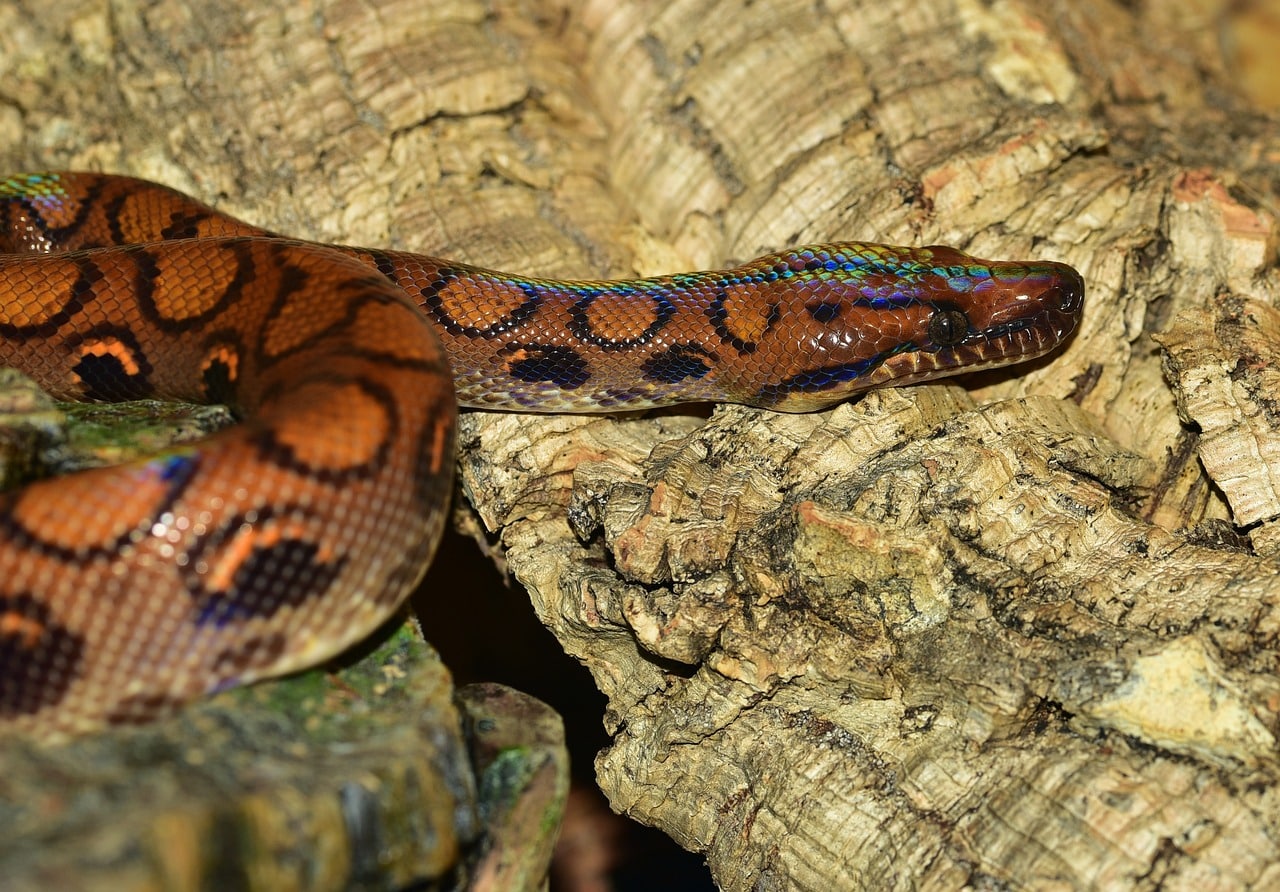 Shutterstock
Shutterstock
The rainbow boa is a true visual spectacle, known for its mesmerizing iridescent skin that shimmers in the light like a true rainbow. Native to Central and South America, this boa’s colors can range from rich reds and oranges to deep browns and greens, often with an iridescent sheen that changes depending on the angle of the light. These stunning colors help the rainbow boa blend into its jungle environment, providing camouflage while also serving as a signal to potential mates. The boa’s eye-catching beauty is a result of specialized scales that reflect light, creating the colorful shine that makes it one of the most visually striking reptiles in the world.
Blue Poison Arrow Frog
 Shutterstock
Shutterstock
Although not a true reptile, the blue poison arrow frog is often included in the list due to its striking appearance and similar biological characteristics to reptiles. Native to the rainforests of Central America, these frogs are famous for their vivid blue skin, often adorned with black spots or markings. This coloration is a result of the frog’s toxic secretions, which serve as a warning to predators. The vibrant blue serves as a deterrent, signaling that the frog is not worth eating. Their vivid color is an evolutionary defense mechanism, making them both beautiful and deadly.
Green Tree Python
 Shutterstock
Shutterstock
Green tree pythons are known for their stunning, vibrant green coloration that blends seamlessly with the foliage in their native rainforests of New Guinea and Australia. Their bright green scales provide them with exceptional camouflage, allowing them to hide in the leaves and branches of trees. These snakes are also known to exhibit a range of different colors, including yellow and blue, depending on their age and environmental conditions. The stunning green hue they display is one of nature’s most brilliant adaptations, helping them thrive in their environment while also captivating anyone lucky enough to spot them.
Panamanian Golden Frog
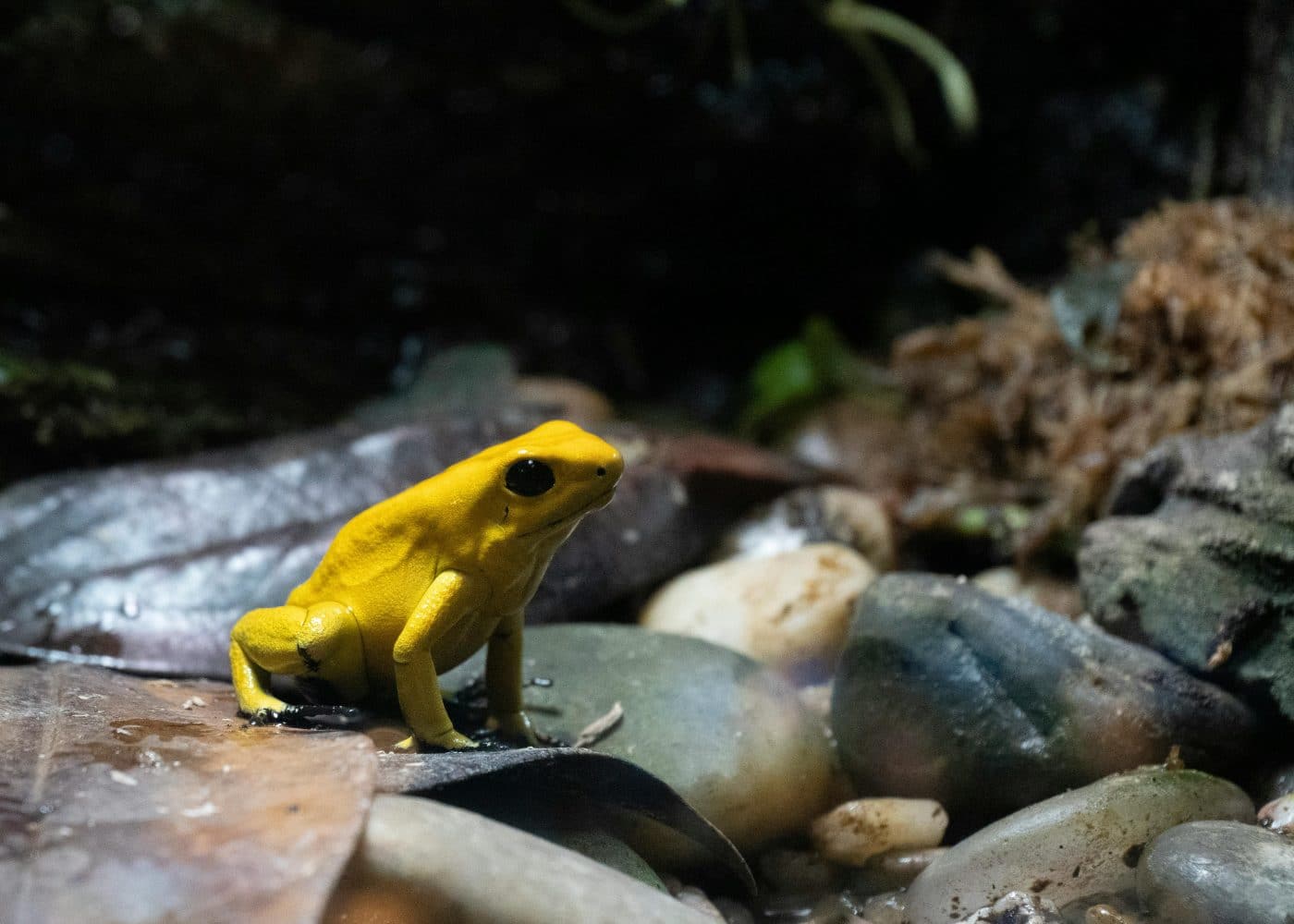 Shutterstock
Shutterstock
The Panamanian golden frog is a small but brilliantly colorful amphibian that inhabits the rainforests of Panama. With its bright yellow skin and contrasting black markings, this frog is truly a sight to behold. The golden color is believed to be a form of warning coloration, alerting predators to the frog’s toxicity. While this frog is known for its vibrant hues, it also plays an important role in the ecosystem, serving as an indicator species for environmental health. Unfortunately, the species is endangered due to habitat loss and disease, but its striking appearance continues to inspire admiration.
Veiled Chameleon
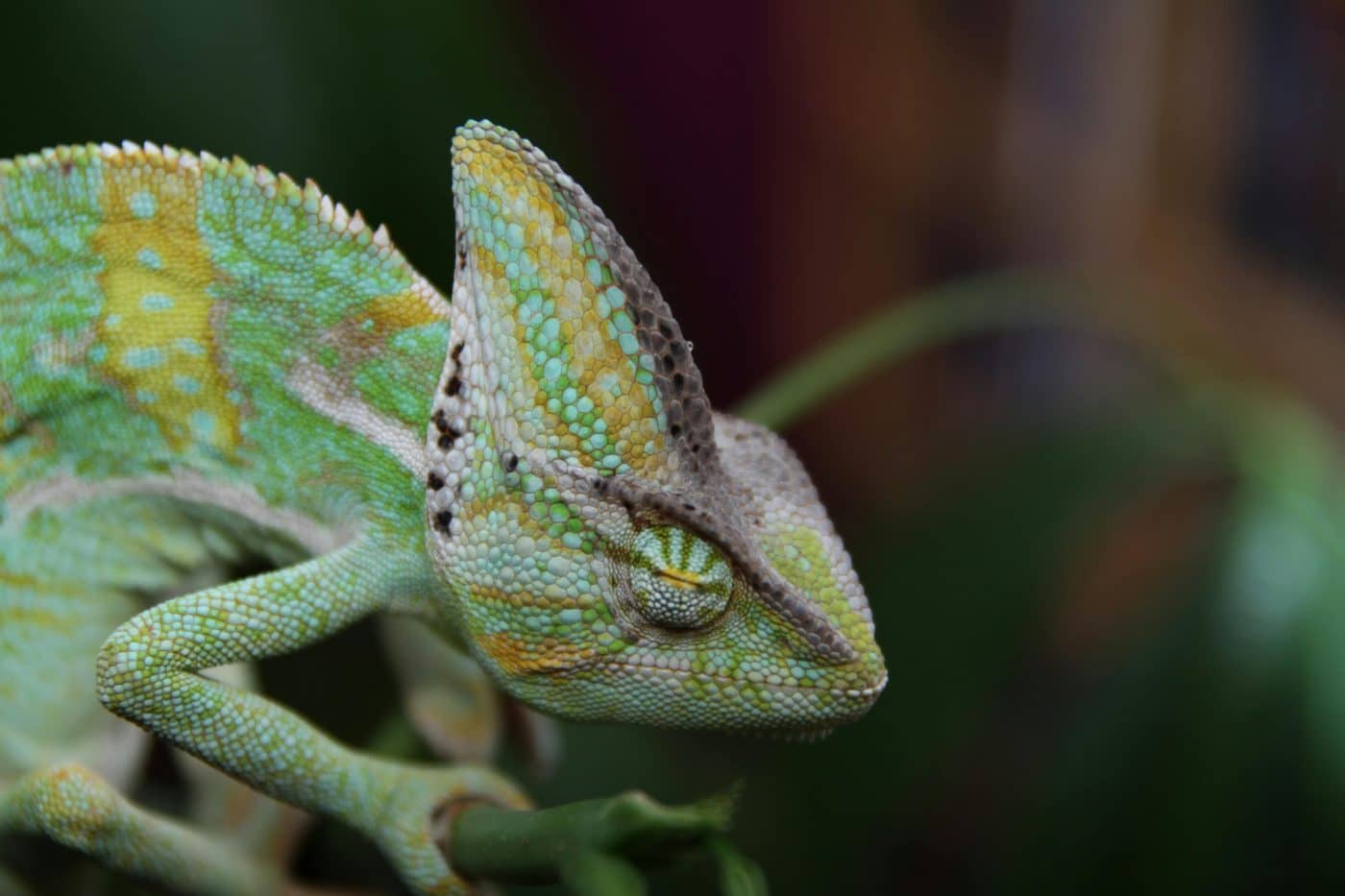 Shutterstock
Shutterstock
The veiled chameleon is known for its ability to change color and is perhaps one of the most famous color-changing reptiles in the world. Native to Yemen and Saudi Arabia, the veiled chameleon can display a wide range of colors, from bright greens and yellows to vibrant blues, reds, and oranges. These color changes are often used for communication, with the chameleon shifting its hue to express moods, attract mates, or ward off rivals. The veiled chameleon’s ability to adapt its colors to its environment and emotional state makes it a fascinating and beautiful example of reptilian evolution.
Madagascar Day Gecko
 Shutterstock
Shutterstock
The Madagascar day gecko is a true jewel of the reptile world, boasting striking green and red colors that are nothing short of breathtaking. Native to Madagascar, these geckos have vibrant green bodies adorned with red markings, making them stand out in the bright sunlight. Their colors are not just for show; they also help with temperature regulation and camouflage among the tropical plants and flowers. As one of the more stunning reptiles in Madagascar, their bright colors serve as both a form of attraction during mating and a protective mechanism against predators.
Painted Turtle
 Shutterstock
Shutterstock
The painted turtle is named for the vibrant, multicolored patterns that adorn its shell, giving it an appearance that’s as stunning as it is functional. Found throughout North America, this turtle’s shell features striking shades of red, orange, and yellow, with intricate patterns that vary between individuals. The bright colors not only serve as camouflage in their natural habitats but also as a display of health and vitality. Male painted turtles use their bright shells to attract mates, and the colors they display can reflect their age and overall well-being.
Mexican Milk Snake
 Shutterstock
Shutterstock
The Mexican milk snake is a brightly colored species found in Mexico, known for its bold red, black, and white pattern. These snakes have a striking resemblance to the venomous coral snake, which is a defense mechanism called Batesian mimicry. By mimicking the dangerous coral snake, the Mexican milk snake deters potential predators. The striking combination of colors is one of the most recognizable in the reptile world, and despite being non-venomous, these snakes are truly captivating. Their colorful scales make them one of the most visually appealing snakes found in the Americas.
Gila Monster
 Shutterstock
Shutterstock
The Gila monster is one of the few venomous lizards in North America, but its vibrant, brightly colored body makes it a standout in the reptile world. Native to the southwestern United States and Mexico, this lizard has a striking pattern of orange and black scales. These colors are not just for decoration; they also serve as a warning to predators that the Gila monster is capable of delivering a painful and venomous bite. The vivid colors are a bold reminder that this creature is not to be messed with, even if it is incredibly mesmerizing to look at.
Collared Lizard
 Shutterstock
Shutterstock
The collared lizard is a colorful reptile found in the southwestern United States, known for the distinctive “collar” of black markings around its neck. The males of the species are especially vibrant, showcasing brilliant greens, blues, and oranges during the breeding season. These lizards use their vibrant colors as a signal of their dominance and to attract females. The bright hues and bold markings help them stand out in their rocky desert habitats, where they rely on speed and agility to capture prey and avoid predators.
Emerald Tree Boa
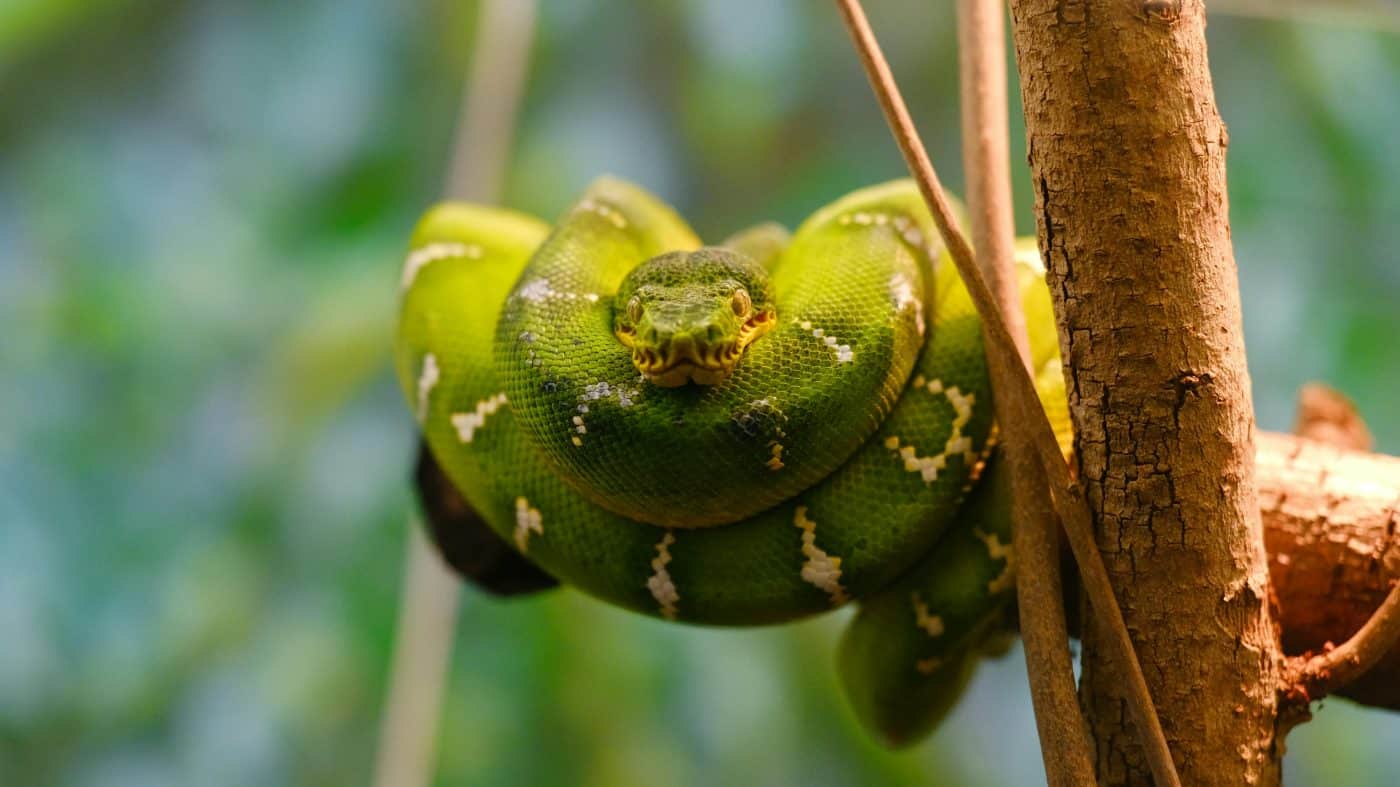 Shutterstock
Shutterstock
The emerald tree boa is a striking snake that lives in the rainforests of South America. As the name suggests, its most remarkable feature is its vibrant green color, which helps it blend in with the trees it inhabits. The emerald tree boa’s bright green scales are complemented by a light yellow or white underbelly, which adds to its stunning appearance. These boas are arboreal and spend most of their time coiled in the trees, waiting to ambush prey. Their vibrant color not only makes them a visual marvel but also a master of camouflage.
Blue-Tongue Skink
 Shutterstock
Shutterstock
The blue-tongue skink, native to Australia and New Guinea, is a lizard that’s well-known for its vibrant blue tongue, which it sticks out as a defense mechanism to startle predators. In addition to its unique tongue, the skink’s body features a striking blend of tan, brown, and orange, often with distinct dark stripes running along its sides. The combination of its colorful body and dramatic tongue makes the blue-tongue skink a visually fascinating creature. This reptile’s appearance, along with its calm temperament, has made it a popular pet for reptile enthusiasts.
The Reptilian Rainbow
 Shutterstock
Shutterstock
The animal kingdom is home to some truly extraordinary creatures, and the vibrant reptiles on this list serve as a stunning reminder of the power of evolution and adaptation. Whether for camouflage, communication, or attracting mates, these reptiles’ stunning colors are more than just eye-catching—they are vital to survival. From the dazzling hues of the rainbow boa to the striking patterns of the Mexican milk snake, these creatures are nature’s living works of art. One thing’s for sure: nature’s color palette is more amazing than ever imagined!
 Toledo, United States.
Toledo, United States.